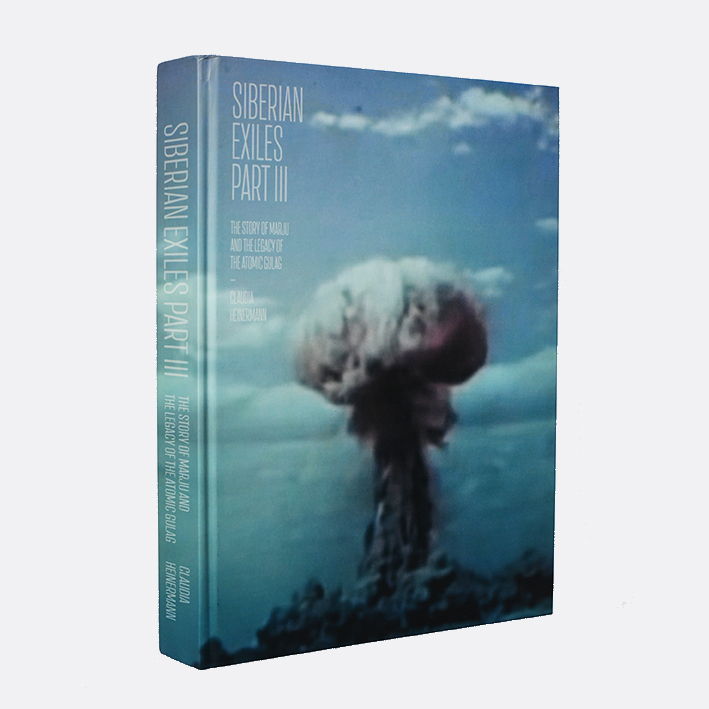Since 2016 I have been working on a trilogy “Siberian Exiles” about the deportations from the Baltic states to Siberia under the Soviet regime. In the three parts, eyewitnesses tell about the occupation of their homeland, the resistance movement, the deportations to remote areas, imprisonment in Gulag camps and what happened to them after their release. I travelled to the places of their stories in search of traces of this dark history. In conversation with the local population, I kept coming across new stories about the crimes of communism. As a documentary photographer it is my aim to contribute to keeping all these memories, which give us a glimpse into a hidden history, alive.
‘Siberian Exiles Part 3 – The story of Marju and the legacy of the Atomic Gulag’
In part 3 of the trilogy, I follow the story of Marju, an Estonian deportee. This led me to a nuclear test site in Kazakhstan and the beginning of the cold war.
On 25 March 1949, Marju’s 10th birthday, she, her mother and 20,000 other Estonians were deported to Siberia by the Soviets. In 1945 Marju’s father was arrested and sent to a Gulag camp in Kazakhstan because Marju’s parents were suspected of having helped the partisans in the forest. Marju and her mother ended up at a kolkhoz in southern Siberia on the Kazakhstan border, where they were put to work as farm labourers on the vast steppe. In August 1953, Marju was out on the steppe when she saw clouds surging and boiling in the distance. An incredible storm then blew up and everything went dark. She had never seen anything like it.
In the early 1990s, Marju read about the Semipalatinsk nuclear test site, also known as the Polygon, in a book. She felt as if the earth had shifted under her feet when she realized that she had been living next to this nuclear test site during her deportation. A mere 400 km away, surface tests were carried out, mushroom clouds rose into the sky, and the earth was contaminated with radioactivity. Between 1949 and 1989, the Soviet Union carried out a total of 456 nuclear tests at Semipalatinsk, 111 of which on the surface and 345 underground. According to the Kazakh health authorities, more than 1.6 million people were exposed to fall-out from the nuclear explosions. Marju understood that she had probably witnessed the detonation of the first hydrogen bomb on the steppe that day in August 1953. The bomb had the explosive power of 400 kilotons of TNT, which is around 30 times the Hiroshima bomb’s yield. The mushroom cloud extended kilometres into the sky. Public pressure led to the official closure of the test site on 29 August 1991.
Marju could not stomach the fact that nuclear tests had been conducted in an inhabited area, and that people had been exposed to the nuclear fallout and were still struggling with the consequences. Under Stalin, her country was occupied, families were forever torn apart, and innocent men like her father were imprisoned while others were executed. This nuclear test site was yet again proof for Marju that a human life was worthless under Stalin. Marju climbed out of her depression, read everything she could find about the Russian atomic project, and emerged as a true activist. It became her mission to denounce the crimes of communism.
I was deeply impressed by Marju’s story and decided to travel to Kazakhstan in search of traces of the Gulag camps where her father and other Baltic nationals had been imprisoned, and to uncover the history of the Semipalatinsk nuclear test site. I wanted to find out if there is a link between the Gulag system and the Russian atomic project that heralded the beginning of the cold war.
During my travels I spent several days at the nuclear test site, visited Kurchatov, the former administrative centre, and institutes that research the radioactively contaminated area. I talked to former employees, who had worked on the test site under an obligation of secrecy, and went to the villages that had been located in the fall-out zone for years. I spoke to eyewitnesses who in their youth had seen the mushroom clouds rise and felt the earth shake, and also to people whose health had suffered as a result of sustained exposure to radiation. And I also talked to people, who like Marju, had channelled their outrage into action.
About the Book

- Photography: Claudia Heinermann
- Text: Claudia Heinermann
- Design: -SYB-
- Edit Text: Laura Starink
- English Translation: Claire Jordan
- Size: 33cm x 24cm
- Totalling about: 520 pages
- The book is published in English
- Hardcover
- Edition: 750
- ISBN: 978-90-814089-5-0
- Price: 75,- Euro (excl. shipping)
- Buy the book